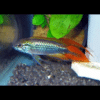To provide the best experiences, we use technologies like cookies to store and/or access device information. Consenting to these technologies will allow us to process data such as browsing behaviour or unique IDs on this site. Not consenting or withdrawing consent, may adversely affect certain features and functions.
The technical storage or access is strictly necessary for the legitimate purpose of enabling the use of a specific service explicitly requested by the subscriber or user, or for the sole purpose of carrying out the transmission of a communication over an electronic communications network.
The technical storage or access is necessary for the legitimate purpose of storing preferences that are not requested by the subscriber or user.
The technical storage or access that is used exclusively for statistical purposes.
The technical storage or access that is used exclusively for anonymous statistical purposes. Without a subpoena, voluntary compliance on the part of your Internet Service Provider, or additional records from a third party, information stored or retrieved for this purpose alone cannot usually be used to identify you.
The technical storage or access is required to create user profiles to send advertising, or to track the user on a website or across several websites for similar marketing purposes.
Assorted Colour Vampire Crab Geosesarma Sp 2-3Cm 2 × £8.71
Purple Vampire Crab - Geosesarma Dennerle - Decapod Crustacean 2 × £7.74



 Assorted Colour Vampire Crab Geosesarma Sp 2-3Cm
Assorted Colour Vampire Crab Geosesarma Sp 2-3Cm 
 Purple Vampire Crab - Geosesarma Dennerle - Decapod Crustacean
Purple Vampire Crab - Geosesarma Dennerle - Decapod Crustacean 
















Emily Carter (verified owner) –
I recently added a pair of Apistogramma Cruzi to my aquarium, and I couldn’t be more thrilled! These dwarf cichlids are not only stunning with their vibrant colors, but their personalities are so engaging. After just one week in their new home, they’ve already established a cozy little territory among the aquarium plants I added for hiding spots. I appreciate how quickly they adapted to their surroundings compared to other cichlids I’ve kept in the past. The shipping was incredibly smooth; they arrived safe and sound, and I could tell they were well taken care of.
I’ve noticed they interact beautifully, often displaying their unique behaviors, and it brings me so much joy to watch. The only minor concern I had was that they sometimes get a bit territorial during feeding, but that’s typical of cichlids and nothing that proper tank management can’t handle. Overall, I highly recommend this pair for anyone looking to enrich their aquarium with lively and beautiful fish. They’ve truly added a spark to my tank!